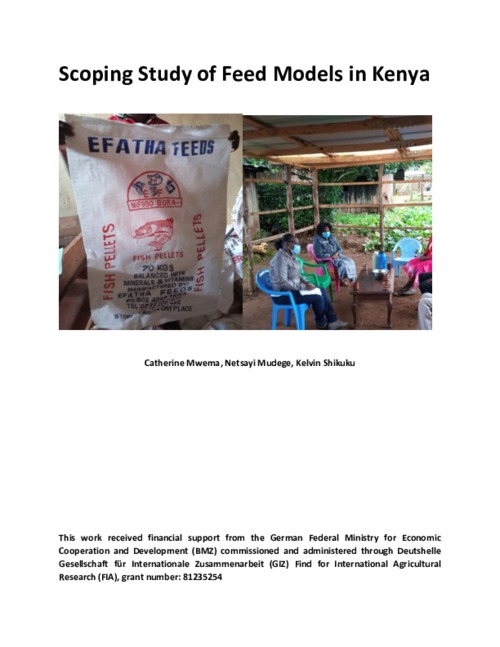Scoping study of feed models in Kenya

The scoping study was undertaken in Kirinyaga County in Kenya, on the 26th to 28th August 2020. Two sites with local feed mills operated by cooperatives formed the focus of the visit. The objective was to draw lessons on the production of feeds using small-scale extruding and palletizing machines by clusters, and any other fish feed models targeting smallholder farmers. The Kenya government offered grants for the purchase of the equipment through an IFAD-funded programme. The community/groups contributed 30% towards the venture, through a 10% cash contribution towards the purchase of equipment, and the rest towards acquisition of raw materials, shelter and other operating costs. The machines include a hammer mill, mixer, palletizer, bag closer and weighing scale. They are manufactured locally in the country and were directly sourced by the programme. In addition to the production of fish feeds, the groups also produce other livestock feeds, the equipment is of high capacity to manage varied feed lines, and helps in business sustainability. The groups were trained in feed formulations of the different feed lines through a FAO funded project. Feed made by the groups is half the price of the imported fish feed, which forms the primary source of commercial feeds. The two groups have managed to overcome challenges relating to group cohesion. They have defined the rules of engagement in their constitution, rules relating to labor sharing, expense sharing, profit sharing, table banking, membership, fines and charges. They keep financial and administrative records for accountability. Key challenges relate to effects of COVID-19 in their business and operations, the financial investment required by each group member, increasing cost of raw materials, and equipment for drying feed away from direct sunlight. Other feed models in the county are agro-dealers/animal feed shops. These agro-dealers supply fish feed to farmers mainly on a by-order-basis. Some commercial farmers who stock imported feed for their use also sell to other farmers. The last model is the use of hand-operated palletizing machines/meat mincers to produce small volumes of feeds for own use.
Permalink
Date Available
Type
Publisher
Copyright
CC-BY-NC-4.0
Research Themes
Topics
Language